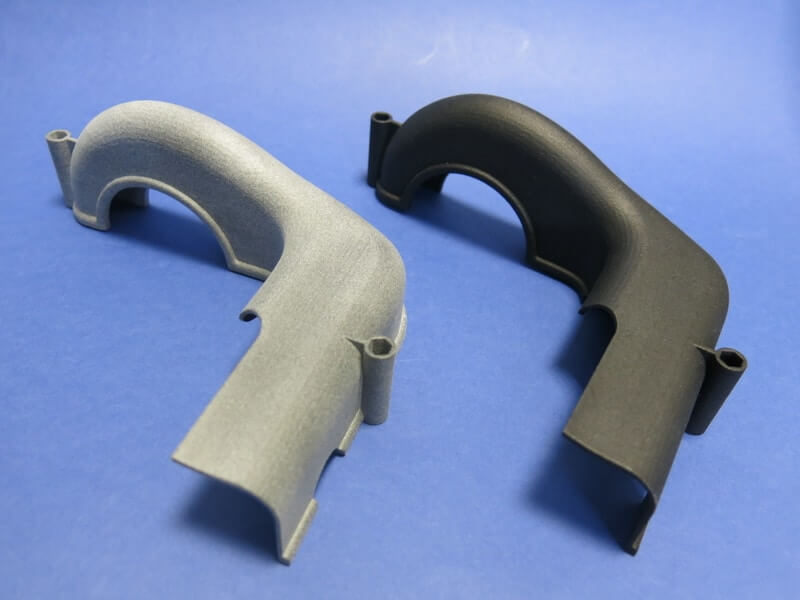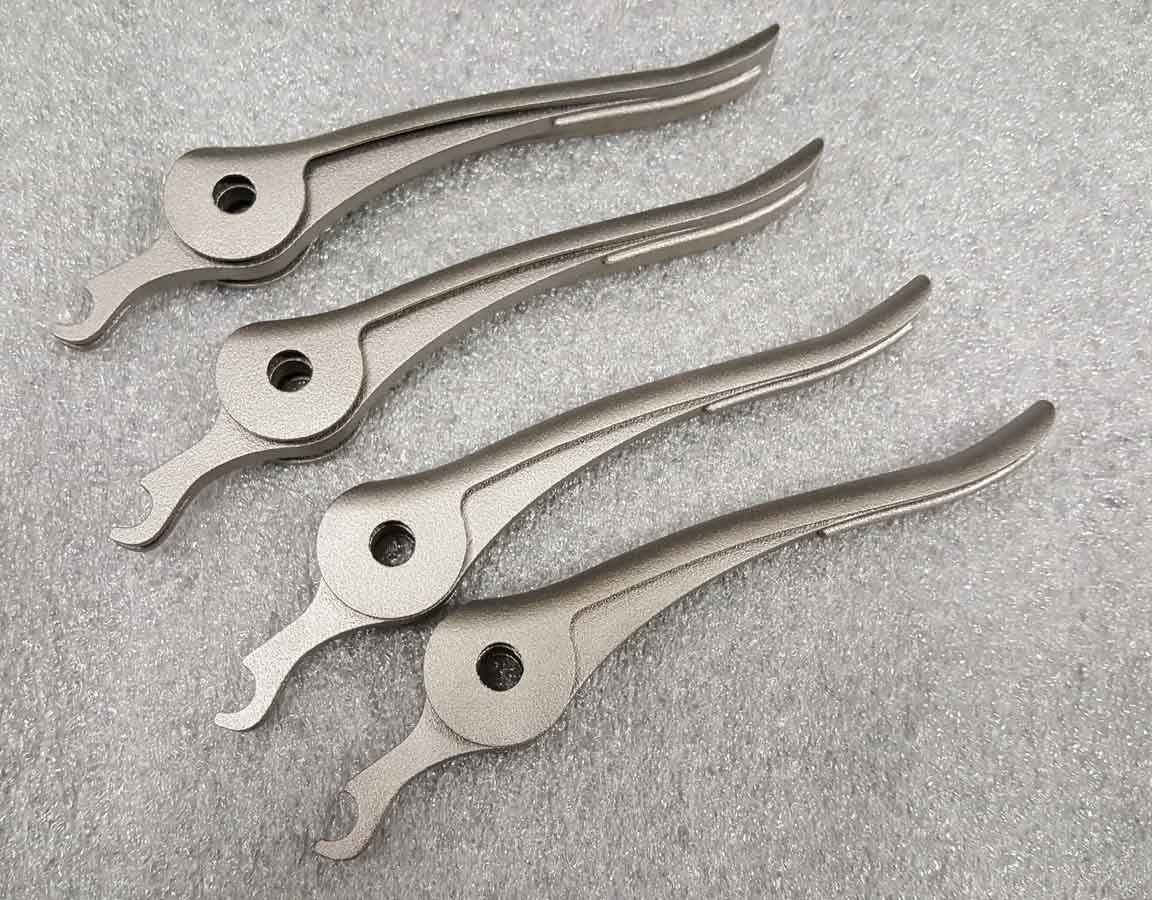According to the results of our annual survey, the State of 3D Printing 2018, plastic is the most common material used in Additive Manufacturing. That’s because plastics allow both for prototyping and production at a relatively low cost than the other 3D printing materials.
Consequently, due to their extensive use, plastics have many variations regarding their mechanical properties. Let’s see which are the best heat resistant 3D printing plastics:
Multijet Fusion PA12
Our Multijet Fusion PA12 parts are created from a fine polyamide powder. This innovative material provided by HP has many outstanding properties over conventional 3D printed plastics, as it’s water resistant, has an excellent resistance to chemicals, alcohols, fuels, detergents, oils, fats etc. On top of that, the Multi Jet Fusion PA12 objects are well suited for applications requiring heat resistance to high temperatures.
The material has gone through many experiments regarding its heat-resistant properties, like Glow Wire Ignition and Flammability testing. According to the White Card provided by HP, “The results obtained certify that the material can resist exposure to a range of 700 °C to 800 °C depending on the dimensions and thickness of the part. The fact that this material has a Glow Wire rating of 700 °C at a minimum thickness means that it can be considered acceptable when application requirements specify temperatures below 700 °C.”
It is important to highlight that HP 3D High Reusability PA 121 was the only 3D printing plastic material whose Glow Wire Flammability and Ignition performance had been certified by UL when the White Card was obtained.
Moreover, regarding its flammability properties, the Multijet Fusion PA 12 material ’s flammability degree is obtained and certified by UL is HB at a 0.75 mm thickness. More specifically, the material tolerates slow burning on a horizontal position (at a burning rate ≤ 75 mm/min for thicknesses < 3 mm or burning stops before 100 mm).
That said, the Multijet Fusion PA 12 material is the perfect plastic to choose for projects where large amounts of heat are generated. For additional info about other technical or mechanical properties of the HP Multijet Fusion PA12 material, check out the dedicated page. Moreover, we invite you to read the UL 94 and UL 746A Certification for our HP Multijet Fusion PA12 for even more detailed information regarding the flammability and electric conductivity of this 3D Printing material.
Ultrasint® PA6 MF

Do you need a strong and heat resistant material? Ultrasint® PA6 MF (Mineral Filled) might be the perfect material for you. Our PA6 MF is built on the chemical base of reinforced PA6; this 3D printing material combines high rigidity, media tightness, and enhanced thermal distortion performance. This plastic material is the perfect choice for any advanced technical applications where properties of mechanically reinforced thermoplastics are required.
With a 3300 MPa Tensile Modulus this material is quite resistant and perfect to create engine parts, and other components for the transportation sector. PA6 is strong enough to hold the whole engine assembly and handle all heat, vibration, and static loads.
The Heat Deflection Temperature of this material is of 207°, making it particularly interesting for projects where heat resistance is needed.
Ultrasint® PA6 FR

Ultrasint® PA6 FR (Flame Retardant) is an interesting high performance material. This 3D printing materials is a Halogen-Free Flame-Retardant PA6 powder for advanced applications, fitting the needs of advanced industries such as electronics, transportation, or automotive. PA6 FR combines excellent mechanical and thermal performance with flammability requirements.
This Ultrasint® PA6 FR is an engineering polymer powder made with an innovative formula, containing a flame-retardant (FR) additive. Its halogen-free formula based on PA6 material is making this 3D printing materials unique. PA6 FR is the perfect 3D printing material to use for flammability-sensitive application fields, his Heat Deflection Temperature (HDT/B) is at 207°.
This high performance PA6 FR material can also be used for electronics projects, its has a UL 94 V-2 rating starting at 0.8 mm, and it has a Glow Wire Flammability Index (GWFI) up to 960 °C.
Glass-Filled Nylon
Glass-filled Nylon is a variation of Nylon, as it’s made out of polyamide powder and glass beads, thus it’s more durable and resistant than the standard Nylon PA 12. It is 3D printed using Selective Laser Sintering, or SLS. is durable and strong and you can use it in cases that demand high thermal conditions or in applications that require particular high heat distortion temperature. Since its melting point is 176 °C (249 °F), this material is a great choice if you want to create objects that fit the requirements of the technical parts. Thus, it perfectly fits projects with technical requirements, as for example in the automotive industry where it’s used for the creation of final parts of car engines.
Read more about the thermal properties of this material on the dedicated datasheet of Glass-filled Nylon.


 Connect with Google
Connect with Google Connect with Facebook
Connect with Facebook





